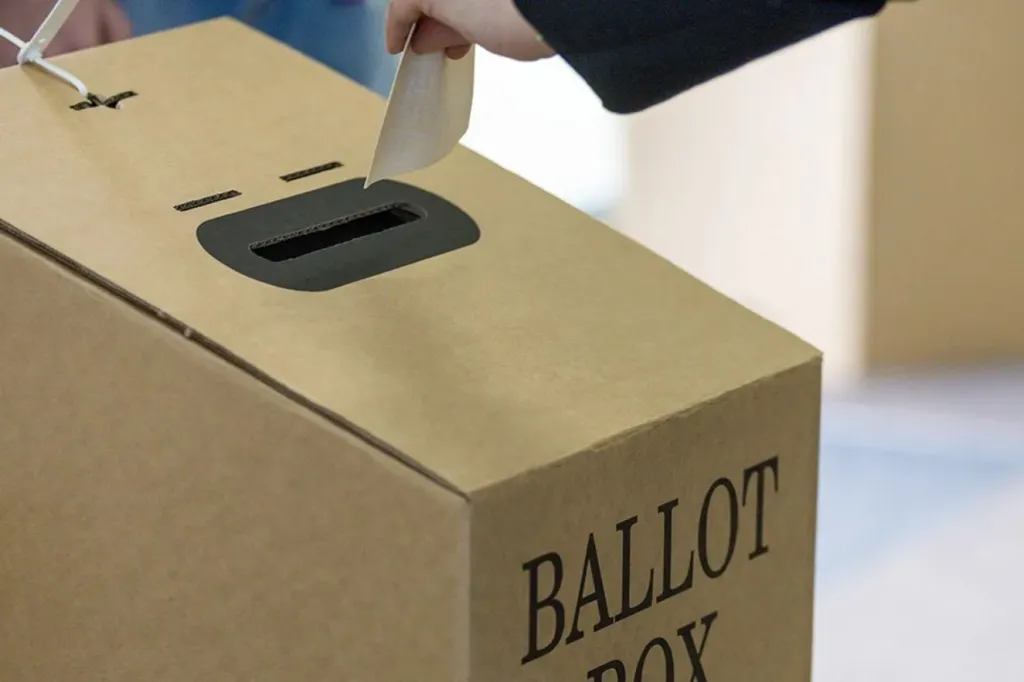Interest decision looms – but there’s one big issue
Mortgage-holders keenly awaiting Tuesday’s official interest rates decision can expect to be doubly disappointed, with no change likely and all eyes instead on the US’s so-called “liberation day”.
The Reserve Bank board’s interest rates decision is usually guaranteed to be the biggest economic event of any given week.
But economists and the market are largely convinced a cut is off the cards, following February’s drought-breaking 25 basis point cut.
That has switched the focus instead to US President Donald Trump, who has promised to announce the biggest round of tariffs on US imports yet on Wednesday (US time).
Australian steel and aluminium producers have already been hit by 25 per cent tariffs. So-called reciprocal levies could spread to all export industries if Trump follows through on his “liberation day” threat to treat Australia’s 10 per cent goods and services tax as a trade impediment.
Betashares chief economist David Bassanese said it was a “ridiculous argument”, given the GST is a value-added tax imposed indiscriminately on local consumption and imports to Australia equally.
“We’ll wait and see, but that would be very unfair and unfortunate if we were to go down that path,” Bassanese said.
You might like
There were two stages to the tariff impact on the economy, he said.
First, the announcement stage, in which uncertainty over what will face tariffs, how high they will be and how long they will last negatively affects markets.
Then comes the actual impact on the economy. Analysts are sweating on data that will come in the weeks and months ahead to assess the extent of the damage.
In the US, tariffs risk raising prices and softening activity. But because Australia had ruled out imposing reciprocal tariffs of its own, the downside risk to domestic economic growth was a more pressing concern, Bassanese said.
“To the extent the trade war heats up, it’s more likely to lean in favour of the RBA cutting rates than raising,” he said.
Still, there was little chance of any change to the official cash rate of 4.1 per cent on Tuesday.
Bassanese said the board was likely to hold out until less volatile quarterly data was released on April 30 before deciding to cut again.
The rates market is on the same page, pricing the chance of an April Fools’ Day cut at less than 10 per cent.
Stay informed, daily
Meanwhile, 32 out of 34 economists (94 per cent) surveyed by financial comparison site Finder predicted a rate hold.
While the meeting coincides with the first week of the federal election campaign, HSBC chief economist Paul Bloxham expects the board to deprive the opposition of ammunition to launch a political broadside.
“By cutting in February, and delivering strong guidance not to expect another near-term cut, the RBA has largely taken itself out of the national economic discussion as the electoral process plays out,” he said.
RBC Capital Markets chief economist Su-Lin Ong said the board would likely want confirmation in the looming quarterly CPI data that underlying inflation is firmly back in its 2-3 per cent target band before delivering another cut.
“Having cut rates in May and jawboning against market expectations of multiple cuts, the case for a follow-up cut … is not particularly compelling,” she said.
Ong said the RBA would want to see more global data and developments to try to gauge the impact and risks to Australia from rising global protectionism, which brings Trump into the equation.
“Staying low during an election campaign is preferable,” she said.
After the last meeting, RBA governor Michele Bullock noted Australia’s jobs market was still tight, which could delay the disinflation process.
Eyes will again be on Bullock after Tuesday’s announcement.
“Overall, we think the tone and language of the statement will not pre-commit the board to a May interest rate cut,” ANZ head of Australian economics Adam Boyton said.
Further insight into the strength of the labour market will come on Thursday, when the Australian Bureau of Statistics releases job vacancy figures for February.
CoreLogic will reveal home value data on Tuesday, alongside retail trade data from the ABS.
Household consumption is on the recovery, albeit from a low base, but further growth in retail spending will encourage economists and policymakers about the strength of the economy.
In more ABS data on Wednesday, building approvals for February are expected to fall back after a recent surge in dwelling consents.
After this week, the central bank’s next rate decision will be on May 20.




